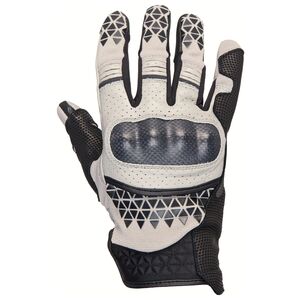How much is too much? That question hangs over the tech-rich touring segment like a little black cloud. Manufacturers persist, nonetheless, adopting the “next big thing” at every turn. For proof, look no further than Yamaha’s Tracer 9 GT+, which gains adaptive cruise control (ACC) and a radar-linked unified braking system (UBS) in 2024.
The Iwata factory ushered in the newly renamed 2021 Tracer 9 GT with a larger displacement, 890 cc CP3 (crossplane inline-triple) engine, semi-active KYB suspension, and a raft of rider aids. Those underpinnings still prop up the 2024 model, but a new Millimeter Wave Radar Unit prompts Team Blue to tack a “+” onto the nameplate.
That suffix represents more than just ACC and UBS. A new Hydraulic Control Unit (HCU) apportions front and rear braking forces to keep the triple-powered sport-tourer stable throughout the braking zone while the third-generation quickshifter gains added functionality. Let's not forget the traction control system (TCS), slide control system (SCS), and front-wheel lift control system (LIF) already governing the bike’s every move.
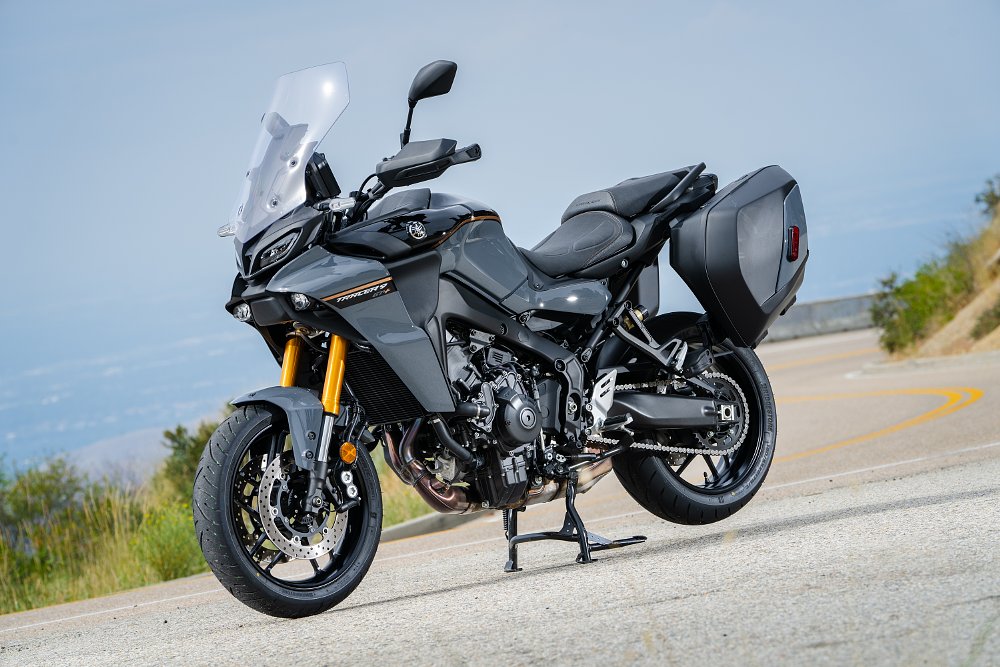
All these high-tech doodads beg the question: Is the Tracer 9 GT+ simply fulfilling market expectations or has it jumped the technological shark? I considered both extremes as the sport-tourer practically rode itself along the winding banks of Idaho’s Payette River — testing the line between just enough and too much.
On the big screen
Before the rider ever activates adaptive cruise or lean-sensitive ABS, their first encounter with the GT+'s tech suite is a new seven-inch TFT display. Favoring simplicity over novelty, the single dash replaces the previous generation’s dual 3.5-inch displays (a setup that drew the ire of critics and owners alike). The consolidated layout now features a digital tachometer and includes a numerical speedometer and gear indicator. Low on novelty, high on clarity.
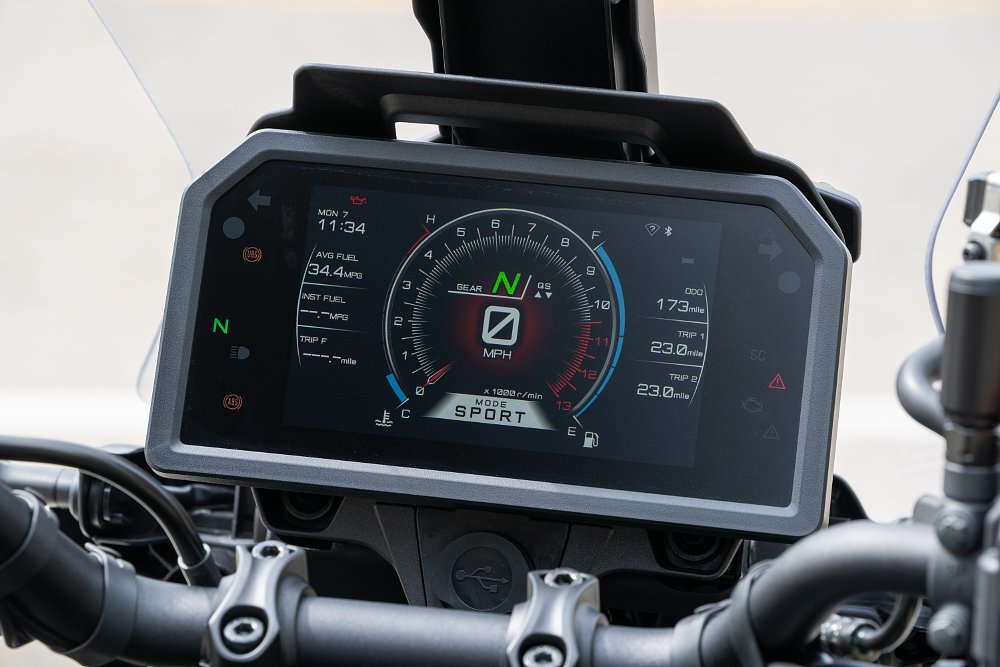
Yamaha doesn’t restrict its feedback-addressing efforts to the TFT alone. It also ditches its highly criticized scroll wheel on the right switchgear. In its stead, a quad-directional joystick simplifies system navigation. A refined submenu structure also delivers an experience worthy of a premium touring machine. All these factors contribute to the vastly improved user interface. And rightfully so, as the Tracer offers more options than ever before.
That fact is most evident upon the first startup. After pairing my iPhone to the full-color dash via both Bluetooth and Wi-Fi, I dialed all four customizable ride modes (Street, Sport, Rain, and Custom), tailored the three heated grips presets (based on 10 available settings), and cycled the TFT’s left panel to my liking. All that before even adjusting the mirrors.
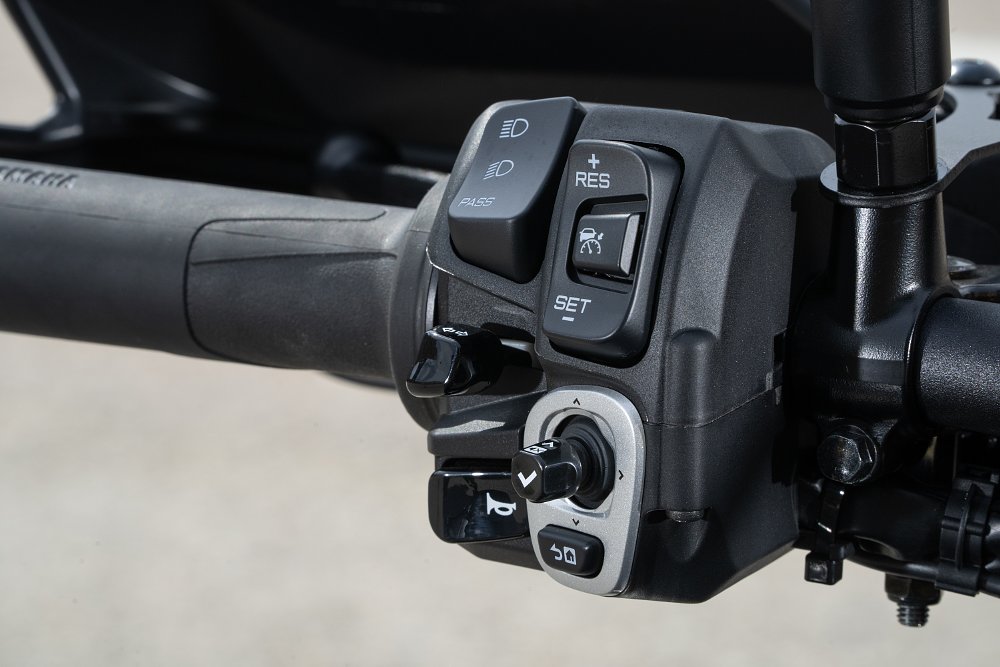
Those taking advantage of the GT+’s turn-by-turn navigation capabilities should expect an even more involved procedure. In order to cast directions on the full-color TFT, the user needs to install both the Yamaha My Ride-Link and Garmin Motorize apps on their smartphone. The latter requires a $3.99 monthly subscription and a healthy dose of patience.
Only a handful of journalists in our eight-rider party utilized the feature, but app connectivity issues delayed our departure time by 10 minutes. Mind you, this all takes place before I push the bike off its center stand. The model’s tech, however, remains just as present out on the open road.
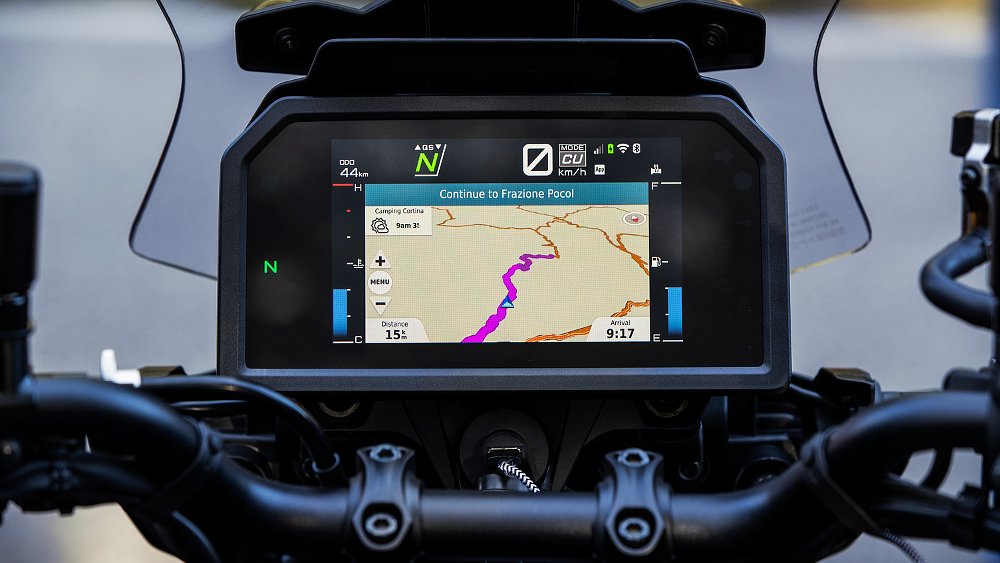
Every move you make
The Tracer already flexed its technological might with the addition of electronically adjustable suspension in 2021. The same KYB setup benefits the GT+ variant, but it gains a new partner in crime with Yamaha’s Unified Braking System. Pulling data from the front-mounted radar unit and six-axis IMU (Inertial Measurement Unit), UBS supplements the rider’s braking applications when necessary. Yamaha makes it abundantly clear, however, that the system doesn’t activate the brakes on its own.
For that reason, it shouldn’t be confused with a front collision avoidance system. Now, I never came close to rear-ending another vehicle during my day-long date with the GT+. Or, at least I didn’t notice if UBS provided additional deceleration in such an instance. That’s how most electronic aids should perform; as if they weren’t there at all. I’m happy to report that both the KYB suspenders and UBS behave accordingly.
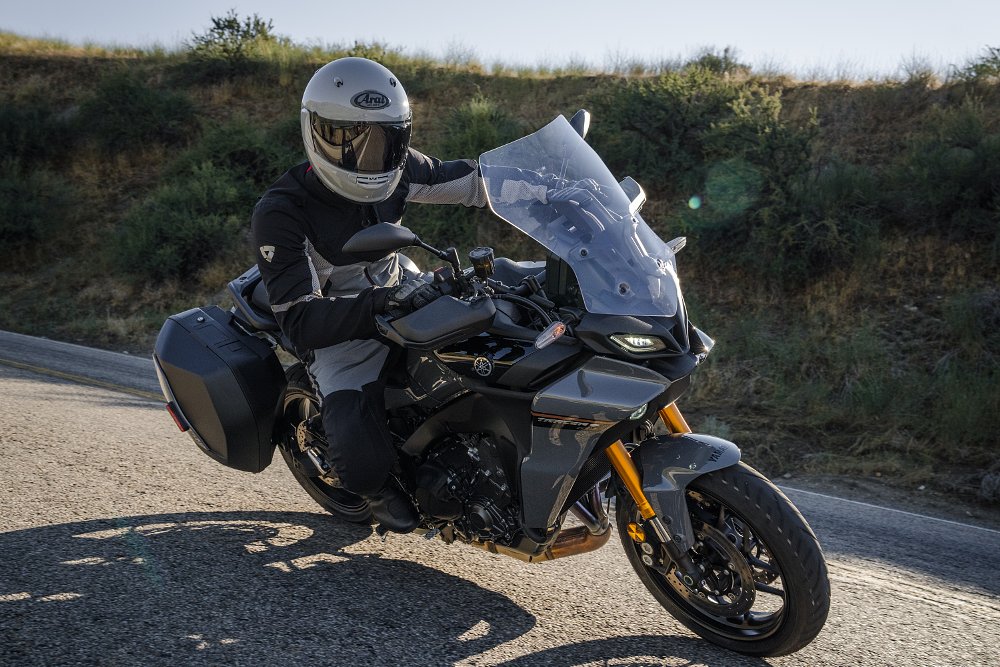
Tied into the UBS, a new Hydraulic Control Unit administers braking pressure fore or aft to maintain chassis composure. The function is most active when the rider solely relies on the front or rear brake. The system doesn’t work in a silo, either. Not only does UBS modify stopping power, but it also communicates with the Suspension Control Unit (SCU) to alter suspension damping rates appropriately.
These interconnected systems wait in the wings but the Tracer’s lithe-handling character still takes center stage. At 492 pounds wet (claimed), the heavy middleweight dances through the corners with fleet-footed fluidity. It doesn’t forego comfort in exchange for that nimble nature, either. Both the A-1 and A-2 suspension settings transfer minimal shock to the rider. I preferred the more responsive A-1 mode on Idaho’s well maintained byways, while A-2 made mincemeat of Boise’s well worn surface streets.
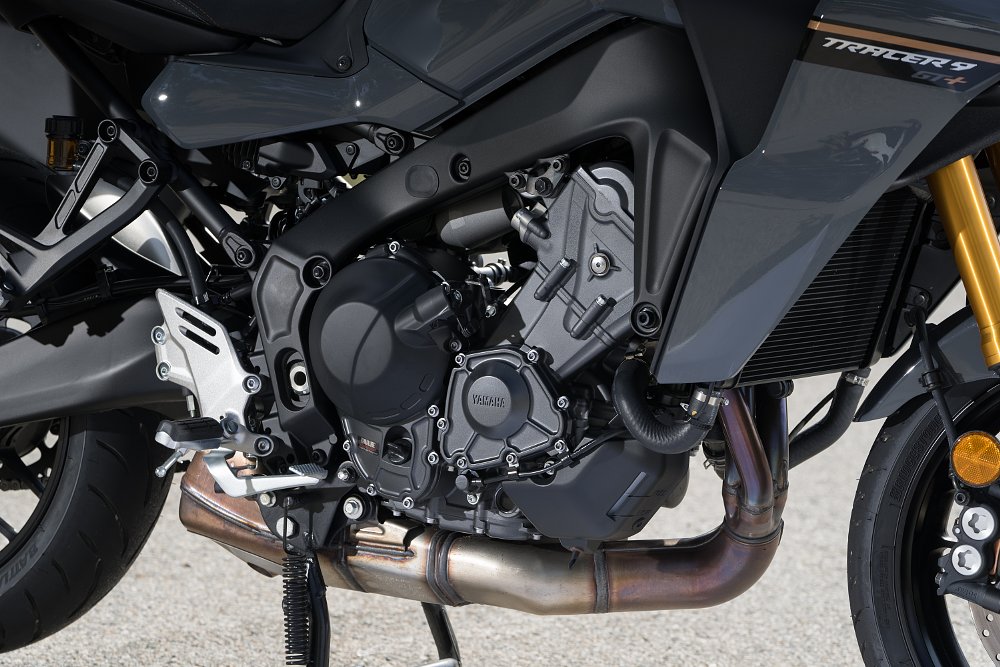
The ride is even-keeled, no doubt. But, with so many systems at work, deciphering feedback can become a guessing game. On several occasions, I sensed the bike shifting under me while at lean. In most cases, I’d chalk the movement up to hasty brake or throttle application and adjust in the following corner. That’s nearly impossible on the GT+. Such moments present more questions than answers. Did the lean-dependent Brake Control (BC) activate? Is the semi-active suspension responsible? Was Slide Control sending me a warning?
Many riders rely on feel to suss out such a solution. Diagnosing the issue is difficult when feedback is synthesized through a computer. The same applies in the opposite direction, with the IMU, HCU, and SCU meting out the rider’s inputs. Near the end of the day — after exhausting practically all the settings combinations — I disabled the GT+’s Stability Control, which switches off rider aids completely.
I may have gained more direct feedback in return, but I also lost safety nets like traction control and slide control. There is a silver lining, though. Owners can decide which electronic aids to activate based on their personal style and preferences. After all, it’s better to have and not need than vice-versa. It just requires pulling over and diving into the submenus to do so. On the other hand, there’s one radar-powered feature that always remains available.
Keeping up with the Joneses
Several flagship adventure- and grand-touring machines already benefit from Adaptive Cruise Control. Yamaha is the latest firm to jump on the ACC trend, and its system works just like the other examples on the market. For clarity, that’s a compliment. Even users unfamiliar with the feature shouldn’t be out of their depths. The GT+’s ACC operates similarly to standard cruise control. The only additional step lies in selecting one of the four available following distance settings.
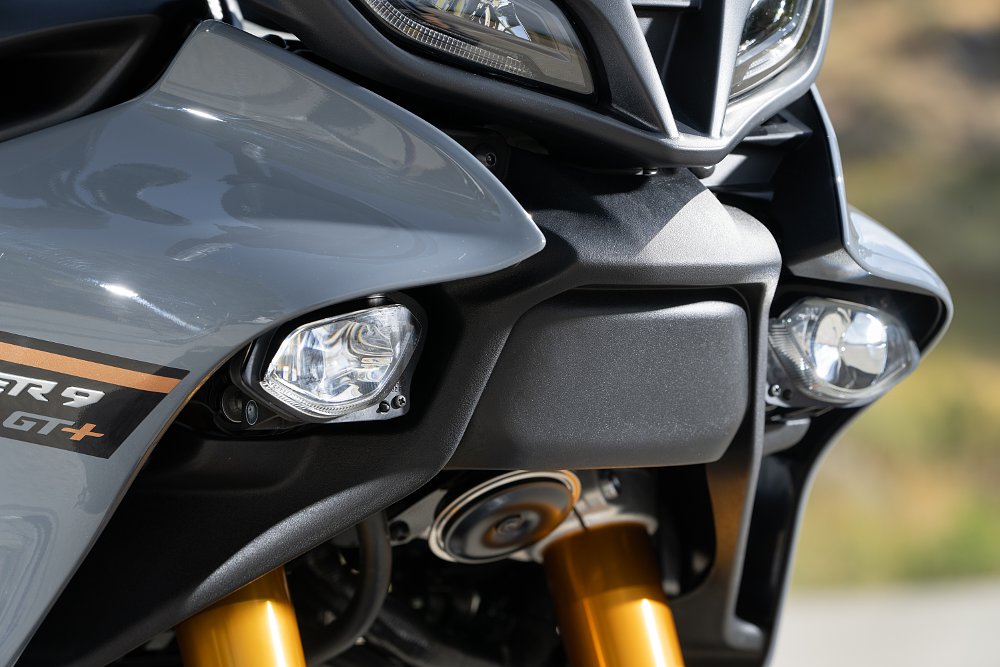
The furthest option provides a generous buffer zone, but even the shortest following distance is never too close for comfort. As conditions change, the Tracer’s electronics help maintain the designated distance. Cornering Assist limits acceleration based on the current lean angle while Passing Assist smooths acceleration when the rider engages the turn signal. ACC goes as far as to tailor the suspension damping force, as well, controlling pitch under deceleration.
Should the GT+ detect an imminent collision, an intervention request flashes on the TFT, prompting the rider to brake harder. The icon only popped up once during my ACC testing. That event was more of an exception than the rule, however. The system effectively detects vehicles ahead while ignoring those parked roadside or traveling in the opposite direction. That tunnel vision presents issues when riding in a staggered formation.
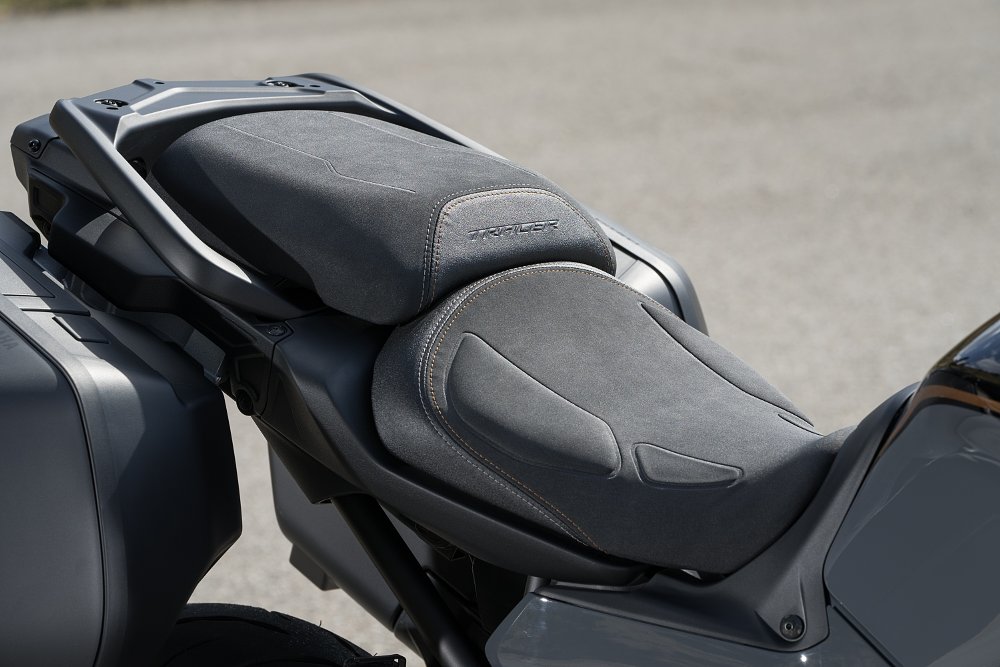
ACC keyed on the rider directly ahead of me with the shortest following distance selected. There’s just one problem; the system wasn’t registering the motorcyclist to my left. As the group bent around a curve, that port-side bike triggered the intervention request screen. At the corner exit, we fanned back into our regular formation, returning the TFT to its standard layout. In another instance, the preceding bike pulled ahead, towing my Tracer along with it. In turn, it dragged me alongside the adjacent rider. A simple brush of the brakes put me back in my place, and just as well, it also disengaged ACC.
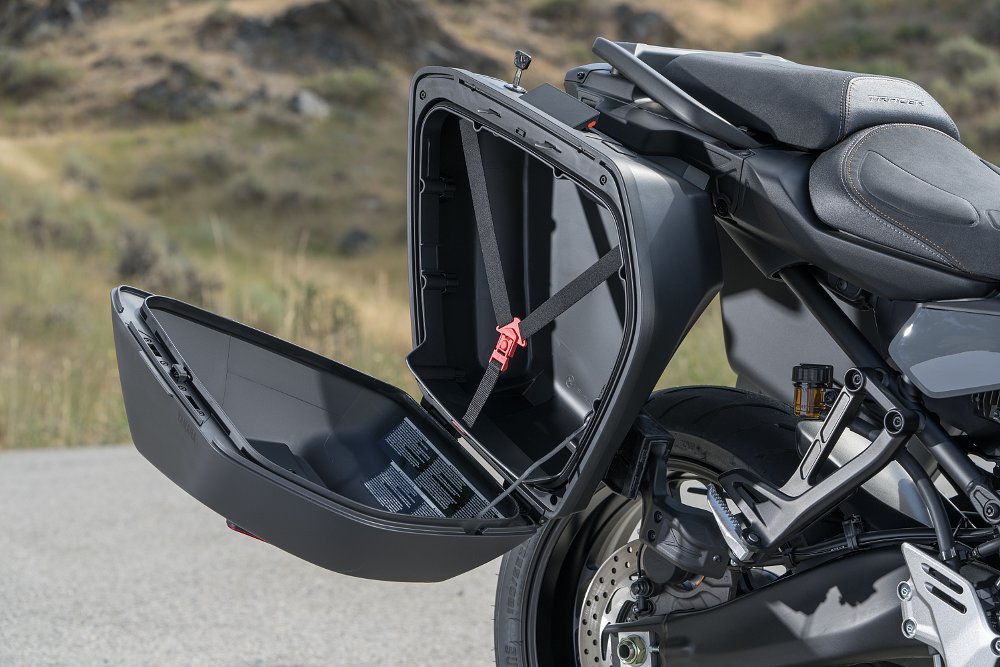
Aside from those anomalies, the system remained reliable in every other situation. Even with the cruising speed set above 75 mph, and traffic ahead traveling at a considerably lower pace, ACC slowed the bike’s roll with room to spare. I’ve trusted similar systems for hundreds of miles. I’d do the same with the GT+.
In excess
Adaptive Cruise Control and a Unified Braking System signal the Tracer’s arrival in the premium sport-tourer category. Yamaha identifies the BMW R 1250 RT and Kawasaki Versys 1000 SE LT+ as direct competitors to its tech-heavy model. Both liter-plus rivals hold certain advantages over Team Blue’s entrant, but neither offers the same radar-aided technology afforded to the GT+. What’s more, the sport-tourer’s $16,499 price tag makes it the most accessible motorcycle featuring ACC.
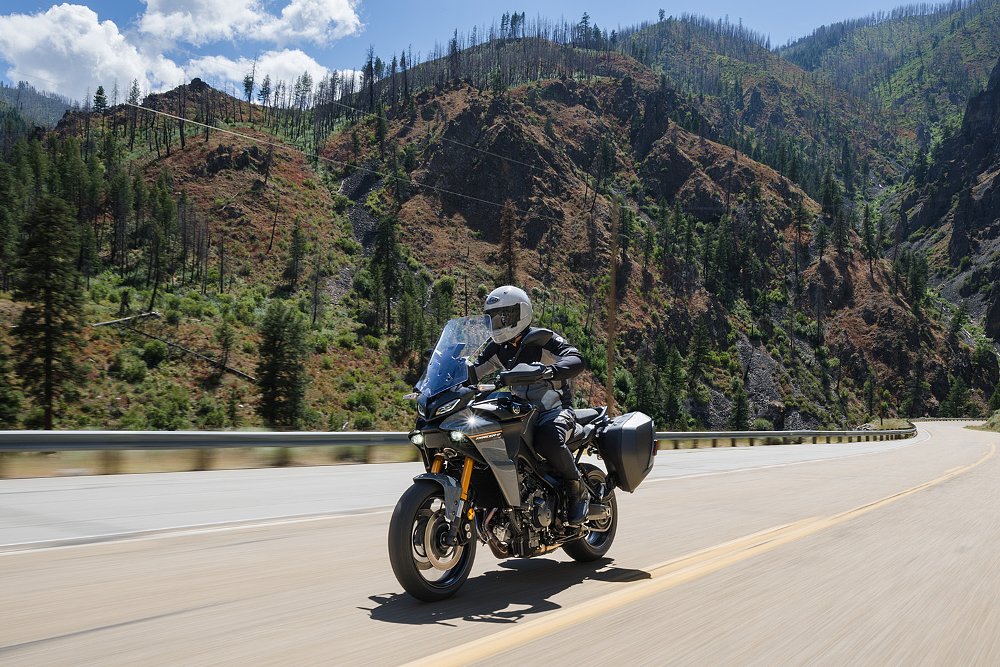
Though, the question remains: Is the 2024 Tracer 9 GT+’s technology suite too much? That answer, undoubtedly, is a subjective one. Ultimately, the user will decide which electronic aids suit their needs. With convenience comes complexity. At least that’s the case with Iwata’s 900 cc-class sport-tourer. As long as the time required to customize the various rider aids isn’t too much for you, the Tracer presents a unique package within the ever-advancing touring category.
| 2024 Yamaha Tracer 9 GT+ | |
|---|---|
| Price (MSRP) | $16,499 |
| Engine | 890 cc, liquid-cooled, 12-valve, inline triple |
|
Transmission, final drive |
Six-speed, chain |
| Claimed horsepower | NA |
| Claimed torque | NA |
| Frame | Aluminum twin-spar |
| Front suspension | KYB 41 mm inverted fork, electronically adjustable; 5.1 inches of travel |
| Rear suspension | KYB shock, electronically adjustable; 5.4 inches of travel |
| Front brake | Dual 298 mm discs; ABS |
| Rear brake | 267 mm disc; ABS |
| Rake, trail | 25.0 degrees, 4.3 inches |
| Wheelbase | 59.1 inches |
| Seat height | 32.3 / 32.9 inches |
| Fuel capacity | 5.0 gallons |
| Tires | Bridgestone T32 Battlax tires, 120/70-ZR17 front, 180/55-ZR17 rear |
| Claimed weight | 492 pounds |
| Available | Now |
| Warranty | 12 months |
| More info | yamahamotorsports.com |



















